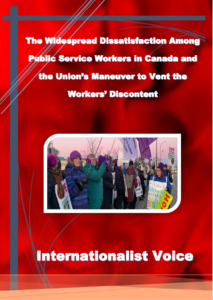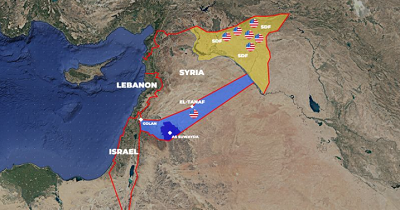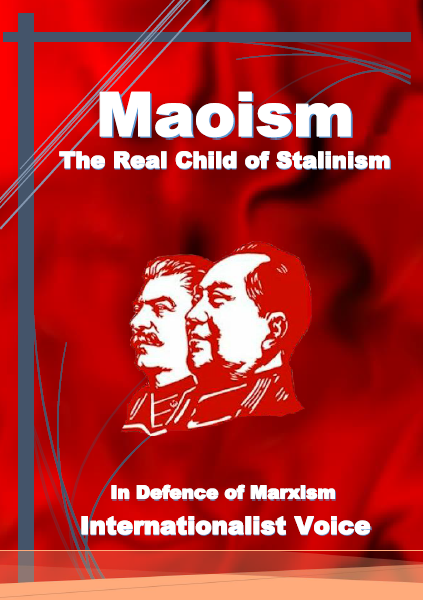The Widespread Dissatisfaction Among Public Service Workers in Canada and the Union’s Maneuver to Vent the Workers’ Discontent
Throughout the history of labor movements, unions have played various roles. At certain times, they served as organs of class struggle, playing a prominent role in organizing protests and defending workers’ rights. However, as capitalism entered its period of decline, labor unions gradually became integrated into the structure of the capitalist state. From that point onward, like institutions such as education, the judiciary, and other state apparatuses, they became part of the mechanisms that sustain the system. Today, the primary function of labor unions is to channel workers’ anger and protests within legal frameworks, directing their energy into controlled strikes.
The goal of the inverted capitalist system is to maximize profit, and to achieve this, it continuously undermines the working conditions and living standards of the working class. The conditions faced by wage workers in so-called advanced Canada are not much different from those in other countries. For a long time, dissatisfaction has been building among workers in the education sector, including non-teaching and non-managerial staff in the Sturgeon School District and Edmonton Public Schools.
These workers include teaching assistants, librarians, nurses, secretaries, administrative assistants, food service workers, custodians, and various types of technicians— all of whom have been enduring challenging working conditions and low wages for years. In Alberta, the annual salary of a teaching assistant is approximately $26,400, while the average annual salary of an educational support worker is $34,500. Considering the cost of living, these figures highlight the significant economic strain faced by this group of workers.[1]
These workers are organized within the Canadian Union of Public Employees (CUPE) across several local branches, including Local 2545, Local 2559, Local 3550, Local 4625, and others.. The previous contract for Local 2545 workers expired in August 2021, while the contract for Local 2559 workers had already expired in August 2020.
Additionally, Local 2559 workers have not received any wage increases since 2015, while the last wage increase for Local 2545 workers was a mere 1.25% in 2020. Over the past 11 years, Local 2545 workers’ wages have remained stagnant for 8 of those years, and for Local 2559 workers, wages have been unchanged for all but one of those years. This situation illustrates the continuous erosion of workers’ wages over time, placing increasing economic pressure on them.
In this so-called ‘civilized’ Canada, the lack of wage increases for more than a decade has forced many workers to take on multiple jobs just to make ends meet. This economic strain, particularly in the aftermath of the COVID-19 pandemic and alongside a significant rise in inflation, has ignited a wave of dissatisfaction and anger among these workers. Mandy Lamoureux, president of the local chapter of the Canadian Union of Public Employees, states:
“Some support staff have gone ten years without a cost-of-living wage. Many of our members work two to three jobs to earn a living wage.”[2]
Trisha Estabrooks, a former manager with the Edmonton Public School Board, stated the following about the standard of living for educational support workers:
“We don’t pay them enough to pay the rent, put food on the table, purchase a bus pass, live a life of dignity.”[3]
For a long time, dissatisfaction and anger over low wages have been growing among workers. They have long called for meaningful actions to improve their conditions, and their frustration from being ignored is palpable. In this environment, there was both the potential for independent labor protests and the risk of discontent spreading to other sectors.
The Canadian Union of Public Employees, by leading protests from educational workers in Edmonton and Fort McMurray, is working to keep these protests within legal boundaries and prevent them from escalating into more radical movements. While workers’ anger over austerity policies and low wages could have provided fertile ground for the formation of a radical anti-capitalist movement, the union is directing workers’ anger and protests down manageable paths through tactics such as prolonged negotiations, worker fatigue, issuing legal strike warnings, and organizing controlled, rotating strikes.
Given the current circumstances, a controlled strike was proposed as an effective means to manage workers’ anger and direct protests within the union’s desired framework. In this regard, the union sought to organize a controlled strike in September 2024. However, the provincial government compelled the union to refer the matter to the dispute resolution board, effectively postponing any strike for at least 30 days. In response to this constraint, the union organized strikes outside of official working hours.
On November 7, 2024, the union issued a 72-hour strike notice, and six days later, the strike commenced. Initially, the strike lasted for two days, beginning on November 13, and continued in subsequent weeks as rotating strikes. During this period, the school boards hired replacement workers and even offered them higher wages than those of the union workers. This practice persisted through December, continuing until the schools closed for the winter holidays.
With the reopening of schools, the school boards announced that, unfortunately, they had no new proposals to present, as it is the provincial government that dictates how much public sector employers can offer workers in wage increases. The government’s new proposal includes a gradual 3% wage increase over four years—a proposal that was rejected by the workers, and protests continue in the form of controlled strikes.
Demetrios Nicolaides, Alberta’s Minister of Education, stated in a press release that the proposed wage increases in this round of negotiations are both fair and reasonable. He further added, “It seems unreasonable that the union is demanding more,” he said, adding these workers exceed the western Canadian average.[4]
There should be no misunderstanding about the financial situation of the Alberta provincial government—it is neither facing a budget deficit nor lacking the resources to pay its workers. Trisha Estabrooks, a former school board official, predicts that the provincial government will have a surplus of around $4 billion.[5] Alberta’s Finance Minister, Nathan Horner, has stated that the proposed wage increase of approximately three percent is fair.[6] This underscores that, despite having sufficient funds, the government chooses to continue undermining workers’ living standards and preventing improvements in their quality of life.
Throughout its history, Canada has never faced a serious threat from another country. Instead, the Canadian state has participated in wars thousands of kilometers beyond its borders to advance its imperialist interests. According to available data, Canada’s military budget in 2023 was 36.5 billion Canadian dollars, representing approximately 1.37% of the country’s GDP. The Canadian government plans to increase its defense budget to 2% of GDP by 2032. To achieve this goal, the military budget will need to nearly double, reaching around 81.9 billion Canadian dollars.[7]
A fundamental question arises: How is this war budget (military budget) funded? It can only be financed by lowering the living standards of the working class. This social class must be subjected to conditions that erode its class identity, leaving it unable to resist these attacks on its standard of living. In reality, the bourgeoisie seeks to keep the working class solely focused on producing surplus value, preventing it from emerging as a social force with a distinct class identity in the dynamics of society.
In such circumstances, the role of labor unions, as part of the capitalist state, becomes crucial. By creating controlled outlets for workers’ dissatisfaction, unions play a key role in containing the radical potential of labor movements, ensuring that protests do not evolve into independent struggles outside official frameworks and preventing them from becoming a movement against the structural crisis of the capitalist system. In other words, by managing and channeling workers’ protest energy, unions prevent the intensification of class struggle and direct this energy into controlled outlets.
In a situation where the class struggle is reviving at the global level, diverse bourgeois tendencies are offering alternatives to contain the class struggle. The Canadian bourgeoisie is aware of the potential of the working class and the maneuvers of the Canadian Union of Public Employees are intended to channel the protests of the workers in order to drain their latent anger and dissatisfaction and prevent the formation of an independent labor struggle and strikes.
The task of labor unions is to manage the sale of labor. It is only through class struggle that it is possible to challenge capitalism at the same time while fighting to raise living standards, job security and work safety.
In the current situation, the independent struggle of workers outside the framework of unions and in its process through factory committees, general labor assemblies and other independent labor institutions is the method of labor struggle that will take the form of labor councils as the class struggle evolves and intensifies.
Long live the independent labor struggle, separate from any capitalist institution!
The future belongs to the class struggle!
Joseph
6 February 2025
Notes:















